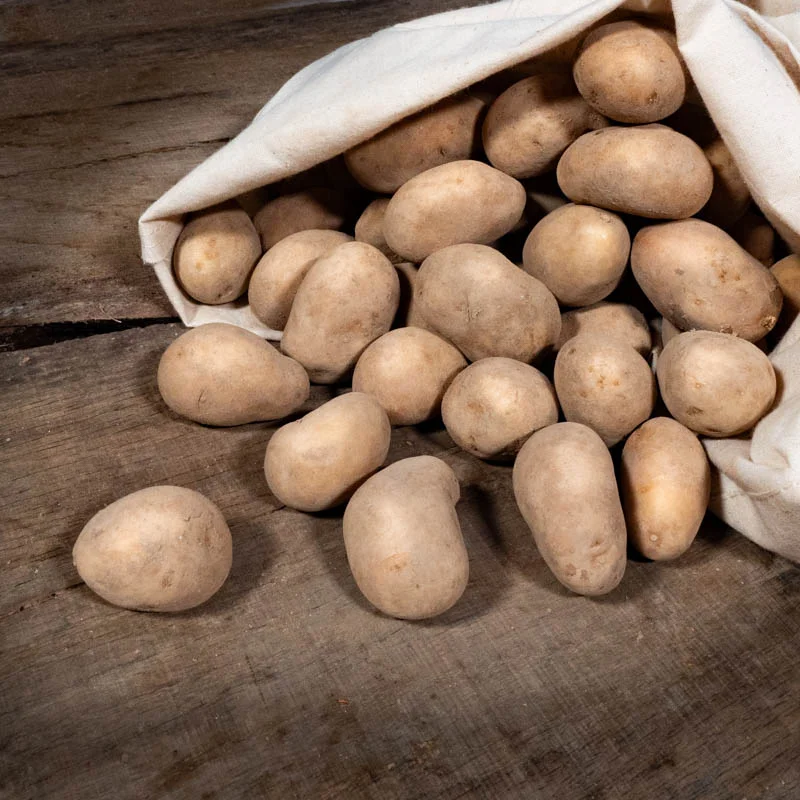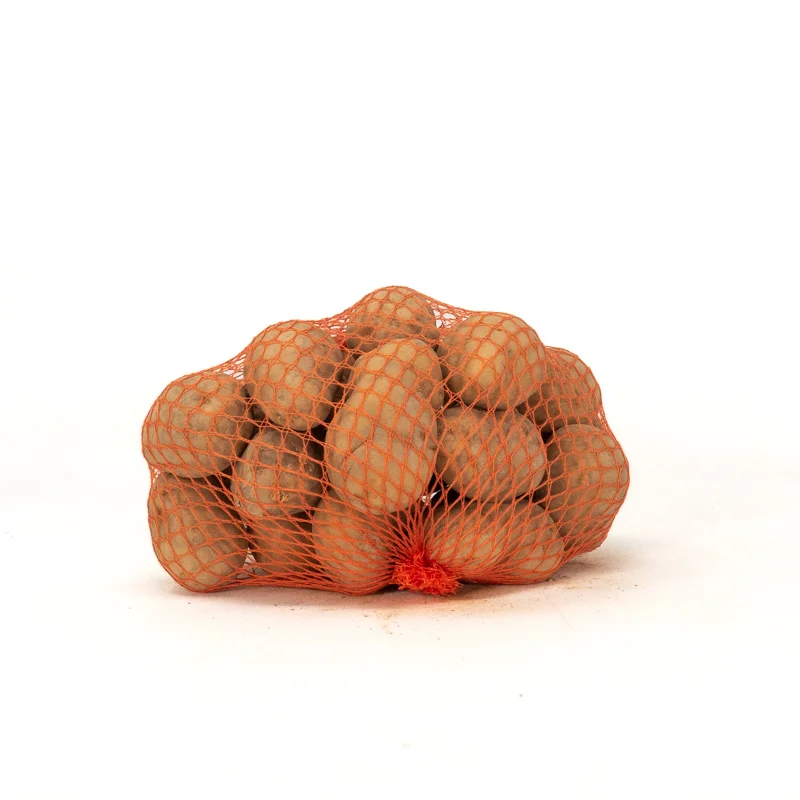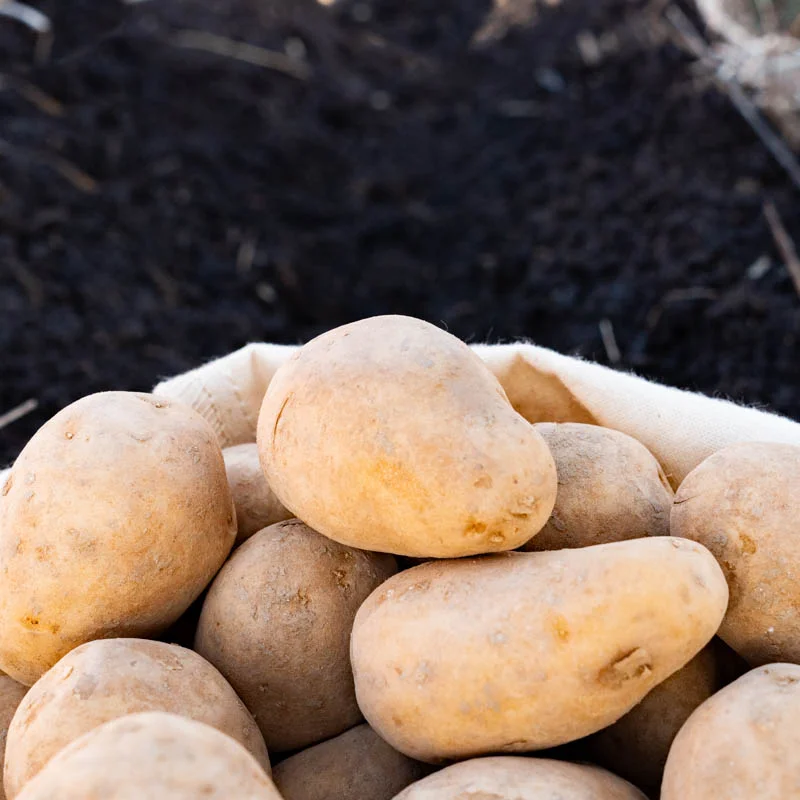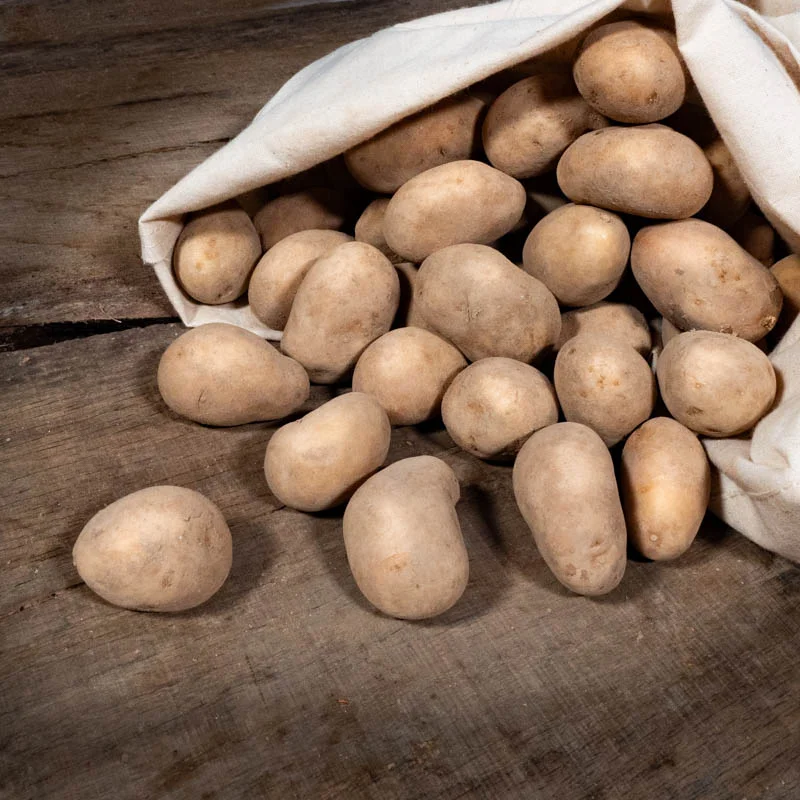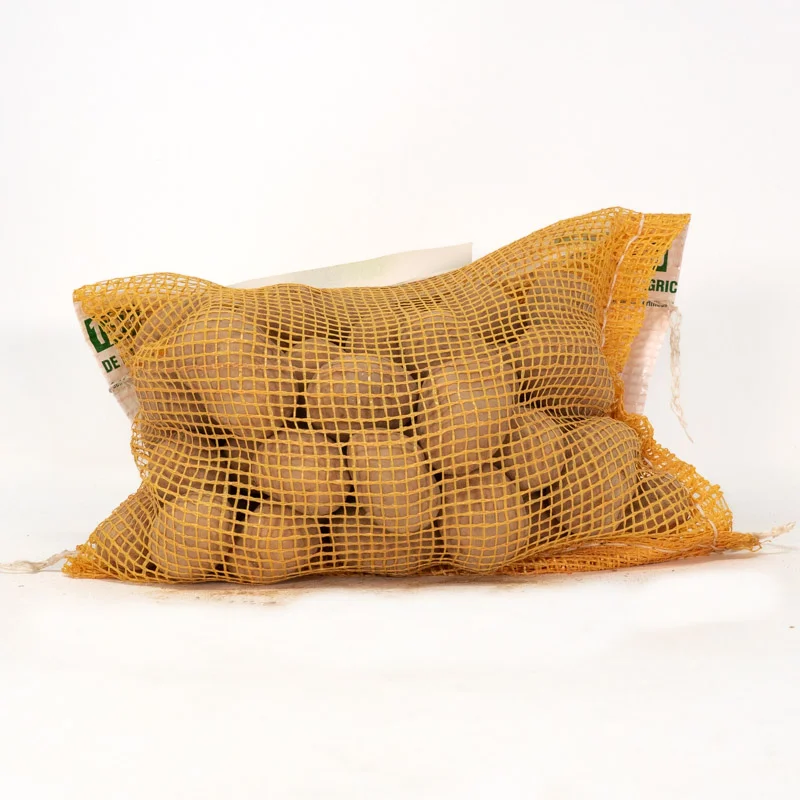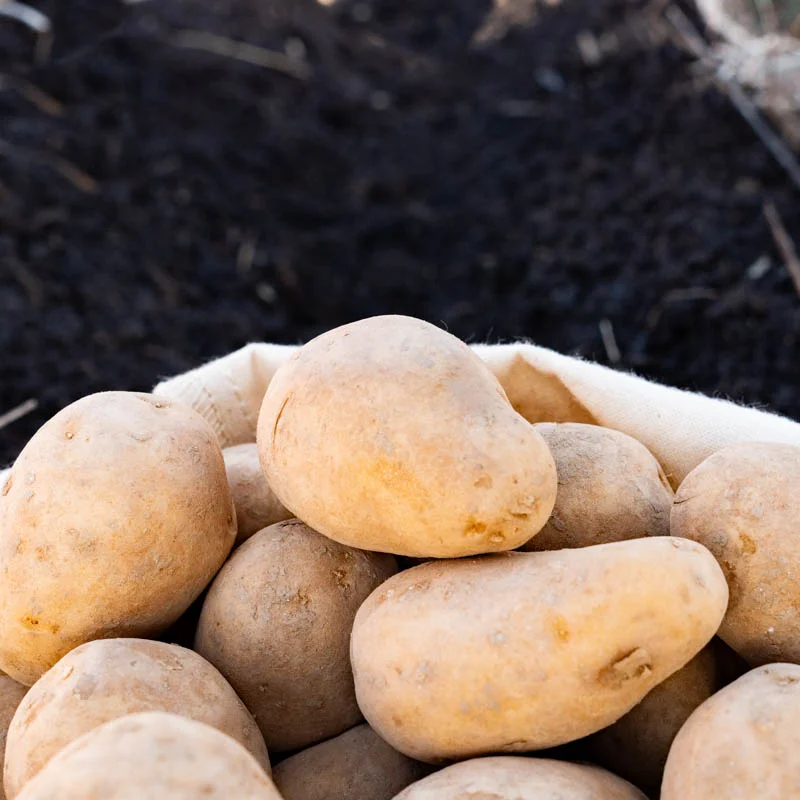Agria organic potato - size 28/35
Potatoes will be back in January 2025!
The Agria potato: a vigorous late bloomer (110-140 days), ideal for French fries.
The Agria potato produces regular, oval tubers with yellow skin and flesh. This late variety has excellent shelf life, high yields and adapts well to difficult conditions. Its floury flesh is ideal for French fries, gratins and purées.
Available in nets of 25 plants and 1.5 kg.
Growing Agria potatoes
Grow potatoes in a sunny spot in the vegetable garden, as in the shade the foliage withers and the harvest is small. Choose light, easy-to-work, deep soil. If necessary, lighten heavy soils by adding mature compost or potting soil, then fertilize with well-decomposed manure before planting.
Plant potatoes when the soil is sufficiently warm (above 7°C) and frosts are no longer a threat, from March to June, depending on the climate. Late frosts can cause young shoots to wither.
Water only during dry spells, without wetting the foliage.
How do I germinate Agria potatoes?
Sprout potato tubers, or seed potatoes, 1 month before the planned planting date to ensure a good start to the crop.
Set up the potato plants in ideal conditions for them to develop nice, stubby sprouts:
- spread the tubers out in crates or trays, without overlapping them, with the "eyes", the points from which the sprouts will emerge, facing upwards;
- keep them in this position, if necessary, using folded sheets of newspaper;
- keep the racks in a bright, cool but frost-free place, between 7 and 15°C. Light is essential for thick, green sprouts.
At planting time, potatoes should have stocky sprouts of 1 to 1.5 cm.
How to plant Rosabelle potatoes?
Plant potatoes in rows 60-70 cm apart:
-
dig a furrow about 15 cm deep in each row, using a furrow cutter or hoe ;
-
place a tuber every 30 to 40 cm, sprout side up, in the furrow;
-
gently cover them with a few centimetres of soil, taking care not to damage the sprouts.
The soil set aside during furrow formation will be brought back around the potato plants as they grow, during ridging.
To improve potato yields :
- ridge potato plants when they reach 15 to 20 cm in height;
- mulch generously at the base of potato plants;
- hoe, if necessary, to limit weed growth, facilitate water penetration into the soil, and reconstitute ridges;
- water during dry spells, without wetting the foliage.
When to harvest Agria potatoes?
Agria potatoes can be harvested at different times depending on their use:
- from July to September, as and when required, for ware potatoes ;
- from September to October, for ware potatoes.
How to store Agria potatoes?
After harvesting, dry potatoes thoroughly before storing:
- spread them out on a sheet or in crates;
- leave them in a ventilated place, sheltered from light and humidity, for a few days;
- store them in silos, crates or crates, in a frost-free, dark place;
- check your harvest regularly and remove tubers showing signs of mould.
Potato pests and diseases
Like tomatoes, potatoes are susceptible to mildew. This disease thrives in hot, humid conditions, and once it appears, it's almost impossible to get rid of. Take preventive action to avoid infestation:
- water only in dry weather and do not wet foliage ;
- mulch crops;
- space plants sufficiently apart to ensure good aeration.
Certain insects, such as Colorado beetles, flea beetles and aphids, can attack potato foliage and cause serious damage. Monitor crops regularly to prevent infestation.
Potatoes can also be affected by internal blackening. This disorder is characterized by bluish-gray spots under the skin, varying in diameter. They can progress deep into the flesh of the tuber, and in the most serious cases result in black spots. Blackening develops when tubers have a high dry matter content and have been subjected to shock or pressure.



